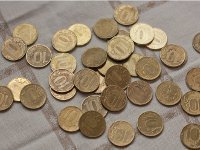Ruble does not fall. It only stumbles
Over two decades of monetary freedomб some pagan worship of the exchange rate of the ruble against the dollar has formed. Its fluctuations are seen as signs of a great turmoil or, at best, cunning schemes of the authorities. The foreign exchange dynamics of recent months is no exception. The U.S. dollar has been steadily growing. Why? An expert Yuri Ursov shared his opinion.
"In early summer, Finance Minister Anton Siluanov said that by fall the national currency rate will be lowered. This is an unprecedented statement, because such intentions are not discussed in public, and their disclosure can be equated to betraying a state secret. Despite the rebuttals that immediately followed from the Central Bank of the Russian Federation and the government leadership, currency speculators (dozens of banks making profit "from the air," moving assets back and forth) reacted in the right way. They started buying euros and dollars in the hope of a profit. Naturally, the demand rose and pulled down the ruble. This is one reason. There are others.

Privatization of state assets amounting to about 2 trillion rubles or $70 billion is planned. Under the Russian law, payments will be made in rubles. The main contenders among oligarchy hold their capital abroad in dollar or euro accounts, and it is profitable for them to purchase rubles for participation in the privatization at a lower rate. The Central Bank and the Finance Ministry have accumulated extensive experience in the exchange rate manipulation, and Russian billionaires have no problems negotiating with them. Formation of the ruble supply before the next stage of the sale of state property also contributed to the depreciation of the Russian currency.
Another factor is an unexpected federal budget deficit of a trillion rubles by the end of the year, as reported by the Ministry of Finance of the Russian Federation. This is an extremely unpleasant fact for which the President of the Russian Federation may punish the leaders of the financial and economic bloc who in the last 18 months have been talking about things going as planned. This gap, at least partially, may be closed by getting rid of a part of the foreign currency in exchange for cheap rubles. There are also seasonal factors, so to speak, as the largest exporters must pay quarterly taxes, and therefore the exchange rate is manipulated with the same goal - to obtain cheaper rubles.
All of these factors have nothing to do with the economy and its state, therefore, the preconditions for a thorough strategic reduction of the exchange rate are not there. The exchange rate is determined, if we talk about the economic reasons, first of all by the amount of raw materials or products that provide the purchasing power of the ruble in servicing payments on the international barter.
Was Russian oil production greatly reduced? Were plants producing export goods shut down? No. Did the government abandon its international obligations like it happened in 2008? The answer is no. Consequently, the ruble is not threatened, except by short-term speculative influences. The above objectives will be achieved, and the rate will stabilize at the same or nearly the same level. This is evidenced by the results of the last trade when over a few days the ruble has appreciated significantly, returning to the mid-August rate. So the ruble is not falling, it is only stumbling against non-economic potholes.
I think that the increased attention to the exchange rate is caused by some ideological reasons. This indicator is of interest to a very limited circle of currency speculators and financiers, as well as strategists of export-oriented companies. The vast majority of workers in Russia is paid in rubles and makes ruble transactions. They are indifferent to the games involving currency exchange rate."
Yuri Ursov
Pravda.Ru
Subscribe to Pravda.Ru Telegram channel, Facebook, RSS!


